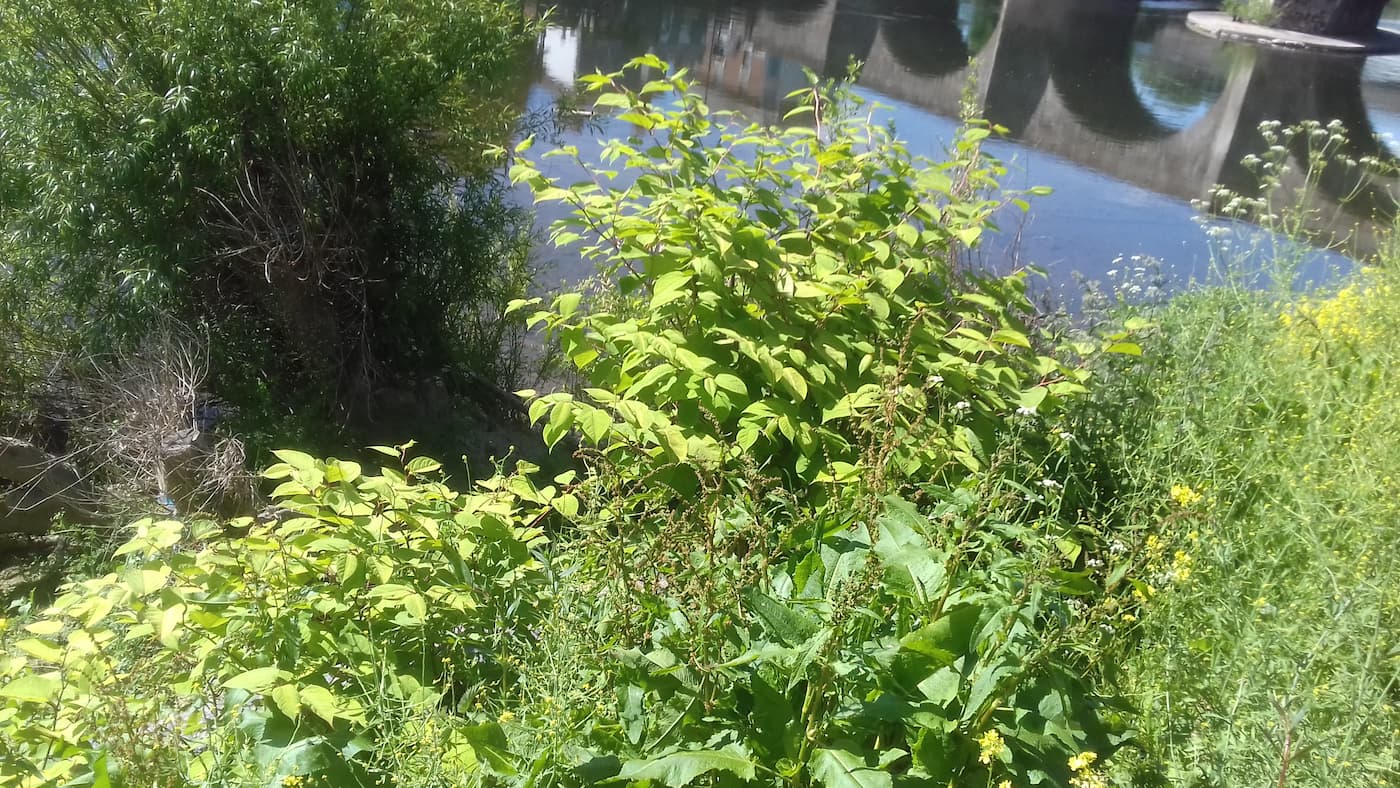Japanese knotweed (Fallopia japonica) poses a major threat to urban areas in Britain. This invasive plant, native to Asia, has proven extremely adept at colonising cities, spreading rapidly and establishing dense stands that crowd out native plants and damage infrastructure. Recent surveys have found knotweed is concentrated in major cities like London, Bristol, Liverpool and Manchester. Understanding how and why this species has proliferated in urban environments is key to controlling its spread.
Knotweed was first introduced to Britain from Japan in the 19th century as an ornamental plant. It gradually naturalised and expanded its range in the countryside. But in recent decades, urban centres have become major hotspots for knotweed infestation. The plant forms extensive monocultures that harm biodiversity and ecological stability in city parks, waterways and greenspaces. Its rapid growth damages buildings, roads, walls and other infrastructure as its robust rhizomes spread and shoot up through cracks in concrete. The concentration of knotweed across cities poses significant environmental and economic threats.
Japanese Knotweed Flourishing in Urban Areas
Distribution surveys have revealed some of the highest occurrences nationwide in London (266), Bristol (457), Liverpool (441), Manchester (649) and Sheffield (308). Major hotspots also exist in Cardiff (389), Swansea (389), Edinburgh (98) and Glasgow (159). The plant forms dense colonies where individual stands coalesce to form contiguous knotweed blankets. Large concentrations of Japanese Knotweed are considered to be around 90-100 cases within 4 Kilometres. You can get a quick overview from this Japanese knotweed distribution map. Why has this species flourished so successfully in Britain’s urban areas compared to native plants? There are several key explanations.
First, knotweed’s biology inherently promotes fast dissemination and growth. The plant reproduces vegetatively from rhizome fragments as small as a fingernail. Any soil disturbance or movement can spread these fragments, allowing knotweed to proliferate widely. Once established, the plant grows extremely rapidly, its hollow, cane-like stems extending several metres in months. This fast, aggressive growth allows it to effectively colonise disturbed, resource-rich urban sites.
Second, urban environments provide ideal conditions promoting spread. Construction, land clearing, grading and poor vegetative cover create open space for knotweed establishment. Regular soil and landscape disruption in cities essentially cultivates habitats for this species. Urban heat islands, increased carbon dioxide levels and nutrient loading from runoff facilitate growth. Abundant edge zones between infrastructure and managed parks offer transitory spaces knotweed exploits. Cities essentially function as disturbed, fragmented landscapes prone to invasion.
Third, human activity and transportation networks efficiently move knotweed within and between urban areas. Construction equipment inadvertently spreads rhizomes to new sites in contaminated soils. Stems are carried on vehicles. Railways, canals and roadways serve as corridors for spreading fragments among cities along transportation networks. Waste areas and waterways provide ideal knotweed habitat and downstream dispersal routes through urban centres. In effect, cities are invasion hubs linked by human connectivity.
Examples of plant species spreading in the UK
Below are some historical examples of invasive plants spreading in Britain:
- Japanese knotweed – Spread along railways after being introduced as an ornamental plant in the 19th century. Its distribution follows railway lines and major roads.
- Indian balsam – Introduced in the 1800s, it spread along waterways and railway lines. Rail track beds and embankments provide ideal disturbed habitat.
- Rhododendron – Originally planted as ornamentals at Victorian railway stations, it escaped into woodlands and spread rapidly along rail corridors.
- Oxford ragwort – First recorded growing on a railway line in Oxford in the 19th century. Spread along the rail network and now common across England and Wales.
- Danish scurvygrass – Occurs mainly along roadsides and spread via salt runoff from roads. Motorway verges provide linear habitat allowing rapid dispersal.
- Common cordgrass – Introduced for salt marsh reclamation and spread via transportation of plant material along railways to new areas.
- Fool’s parsley – Arrived initially in contaminated crop seed and spread to road verges and railway lines where bare ground enabled establishment.
- Buddleia – Often seeded itself on rubble and wasteland created by railway building and then spread along the tracks.
These examples clearly demonstrate the role of railways and roads as corridors facilitating invasive plant spread across the UK countryside and between urban areas. Both systems served as introduction points and allowed rapid dispersal.
Prevention and Early Detection
Controlling knotweed will require strategies tailored to urban areas. Prevention and early detection are critical. Construction sites and transports must be monitored for contamination and new infestations continually surveyed. Targeted herbicide applications, covering during excavations, and root barrier membranes can help control spread. Physical removal via digging and cutting can be effective if done properly over successive seasons to exhaust rhizomes. Replanting efforts with competitive native species are needed to limit reinvasion. Public education and enforcement of management policies will also curb human-assisted dispersal.
Invasive knotweed impacts urban centres environmentally, economically and socially. It reduces biodiversity which provides important ecosystem services to cities like pollination, cleaner water and air, and recreation. Structural damage from knotweed costs millions in repairs and treatment annually across Britain. Knotweed presence lowers property values by 5-10% on average. And dense, monotypic stands degrade parklands, threatening quality of life. Managing this species is crucial for healthy, sustainable cities.
The concentrated distribution pattern of invasive knotweed in British cities presents a troubling yet important picture. Urban centres serve as hotspots for introduction, spread and growth of nonnative species due to human activity and modified landscapes. Yet cities will only become more prominent as global urbanisation accelerates. Understanding the vulnerabilities of urban areas to biological invasions is essential to protect these critical ecological and social systems. Targeted control, informed planning, and active ecosystem management will be key. With better scientific knowledge, public commitment and proactive policies, cities can overcome threats like Japanese knotweed and become more resilient to invasive species.
Resources
Historic England
TCV The Conservation Volunteers
https://www.tcv.org.uk/media_hub/invasive-non-native-plant-species/
Wikipedia
https://en.wikipedia.org/wiki/Introduced_species_of_the_British_Isles
Natural History Museum
https://www.nhm.ac.uk/discover/news/2023/march/over-half-britains-plant-species-now-non-native.html
The Postcode Areas We Serve
Gloucester and Swindon
Birmingham and the Midlands
Bristol and the South West
Cardiff and South Wales










